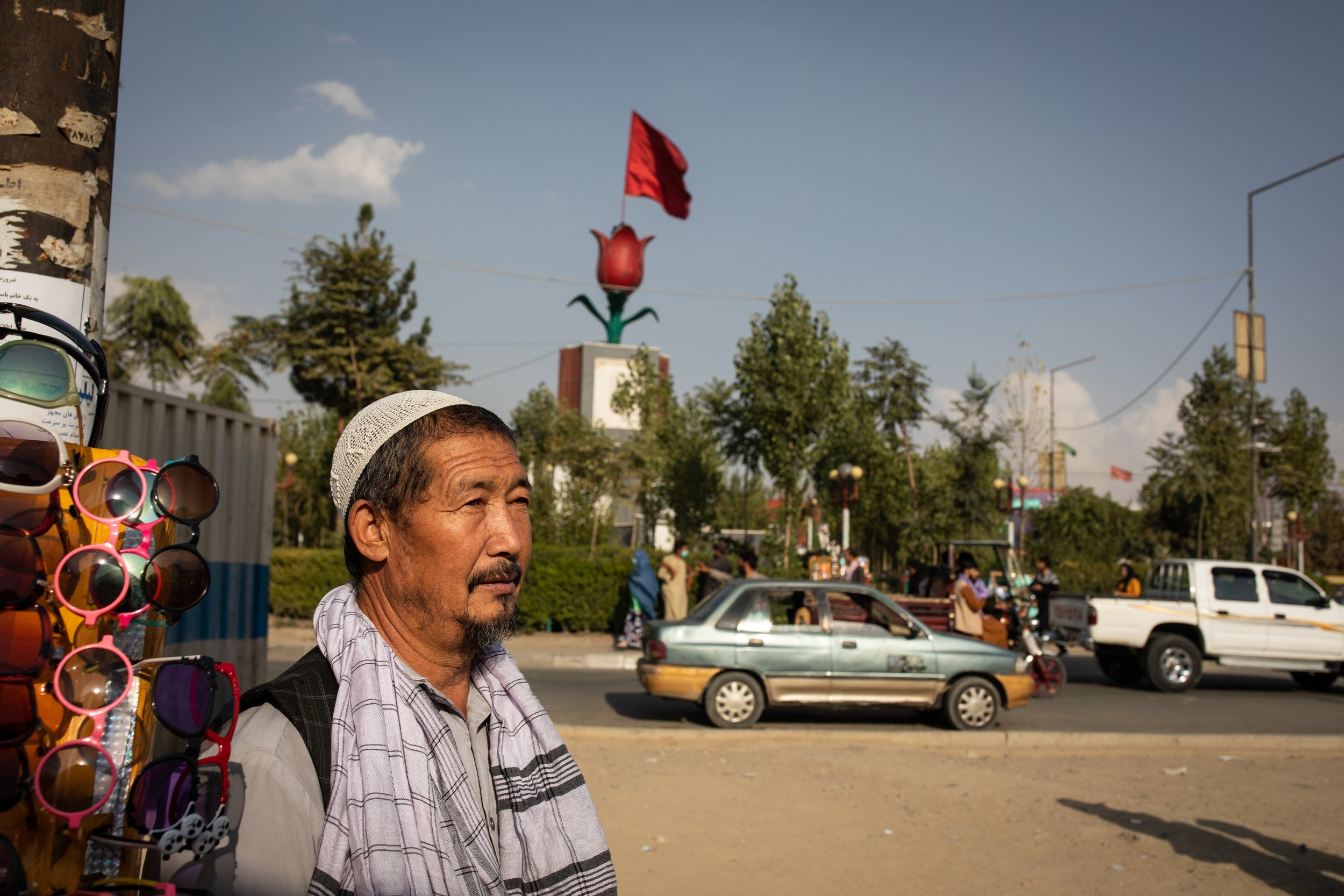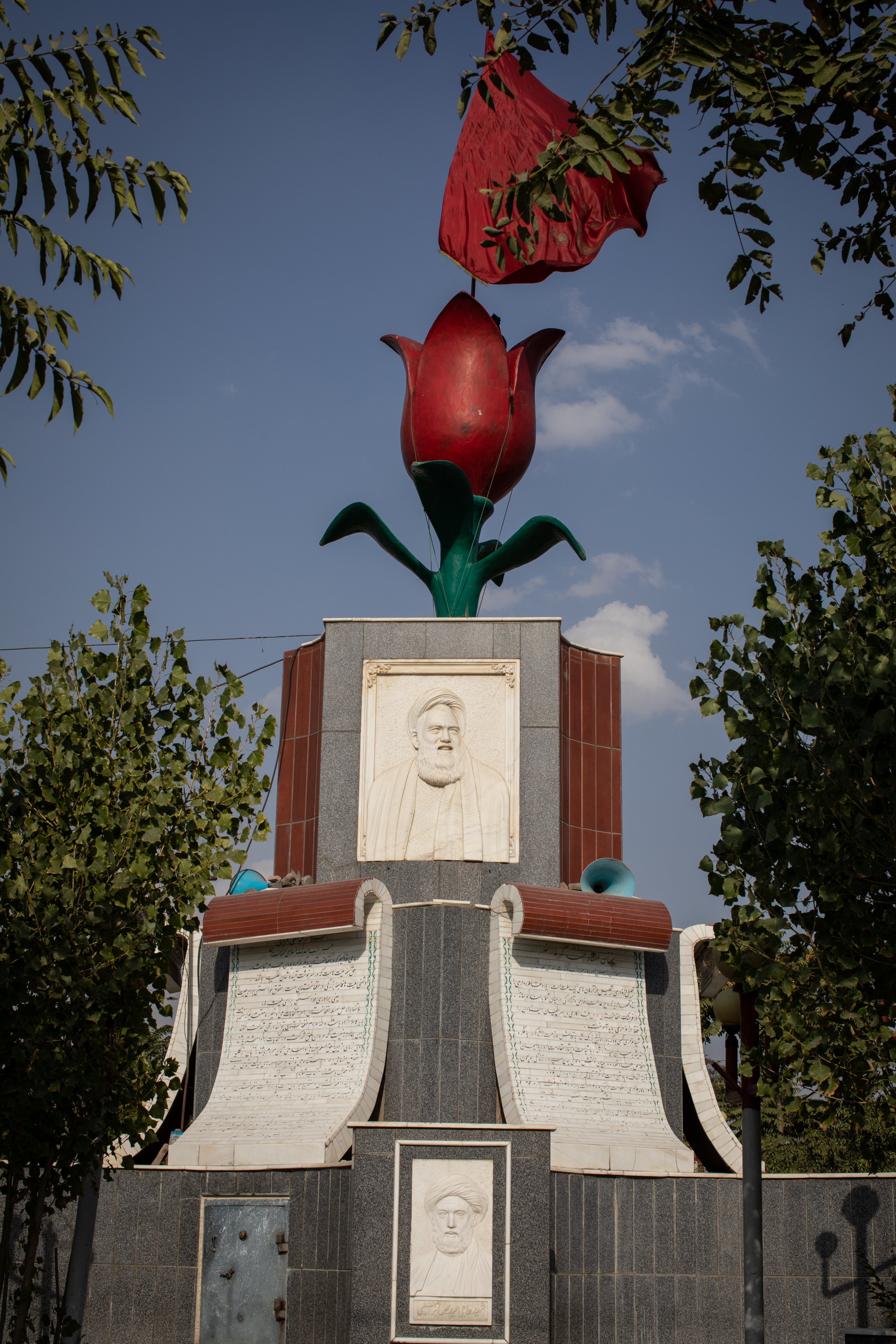Hazara Women in Afghanistan: Fears for the Future
After years of persecution in the predominantly Sunni country, is the worst yet to come for the Shia minority?
“I’m afraid when I see the Taliban. All the people are. I don’t go out because they might beat us or tease us.”
Nineteen year-old Nahid talks in hushed tones in an examination booth tucked away at the back of a Chemist. She glances furtively at her sister Bahara sitting next to her.
“When I’m in the Hazara community I feel safe, but not outside.”
“They can take anything from us, our lands and our homes, but never our education and never our voices. ”
Nahid’s uncle, Hamyun, stands near the door. He works in the Chemist with other members of the Hazara community in the Dasht-e-Barchi neighbourhood in west Kabul. Talking openly about the Taliban like this is dangerous, especially for the Hazara community.
One of the largest ethnic minorities in Afghanistan, the Hazara are predominately Shia and hail from the Hazarajat province of central Afghanistan. In the principally Sunni Muslim country, the Hazaras have faced various forms of persecution under the Pashtun rulers of Afghanistan over the years.
This stretch began in the late 19th century when Abdur Rahman Khan, the Emir of Afghanistan, set about bringing the Hazara people under his control to unite the country. This resulted in over 60% of Hazaras being killed or displaced, with the rest becoming enslaved. These atrocities continued and included expulsion from ancestral lands, the destruction of shrines, slavery and massacres.
During the Afghan civil war of early 1990’s, president Burhanuddin Rabbani feared the strength of the armed Hazara groups in the Shia dominated areas of Kabul and so waged an offensive to rout them out which included shelling, the murders of unarmed civilians and the arbitrary disappearance of Hazara men. These attacks continued when the fundamentalist Sunni Taliban swept to power in 1996. In 1998 the militant group laid siege to Hazarajat, starving its population, and then later that year captured the northern city of Mazar-e-Sharif, going on a rampage that ended in the deaths of Tajiks, Uzbeks and Hazaras in particular. “Tajiks to Tajikistan, Uzbeks to Uzbekistan and Hazaras to the graveyard,” was the Taliban refrain at the time. At least 2000 Hazara boys and men were “summarily executed” according to a 1998 Human Rights Watch report. The final figure is believed to be closer to 20,000.
The Al-Qaeda attacks on the World Trade Centre and the subsequent invasion of Afghanistan by the US and its allies delivered new assurances to the Hazara people. They were able to participate in education, governance and enact social change for their community. The US withdrawal and the fall of Afghanistan in August 2021 has changed all that. Twenty years of hope and emancipation have been dashed. Persecution of the Hazara community continued during the 20 years of Afghan governance but now it will continue; unchecked and unpunished.
“I’m scared.” Eighteen year old Bahara whispers. “They won’t let us go to school. Right now the situation is so bad. There isn’t a bright future.” The two girls dream of higher education. Nahid wants to become a doctor, Bahara a lawyer. Their parents encouraged them to study so that they could work. This is looking increasingly unlikely for all women under the new Taliban regime. Especially the women of the Hazara community.
“They are saying we should be married at eighteen. I don’t want to be married yet,” Nahid protests. “I want to learn. I want to improve myself.”
Nahid believes that everyone in Afghanistan will face problems now. Especially the ethnic minorities. A sentiment shared by her uncle Hamyun.
“The Taliban said that when they take power they will erase the history of the Hazara.” He stops to glance across the boxes of medicine stacked up and out of the window. He holds his breath for a tense moment. A pick-up truck displaying the new white flag of the Islamic Emirate of Afghanistan and carrying a group of heavily armed Taliban men idles past. The danger faced by all of those in the chemist comes rushing in like a cold wind.
In August of this year, photos circulated on social media showing the destroyed statue of Abdul Ali Mazari, the Shia militia leader and champion of the Hazara people. It stood in the centre of Bamyan province, the largest town of the central Hazarajat province and home to the Hazara community. There were reports of Hazara flags being burnt by the Taliban at the same time. Bamyan is also the site of two large statues of Buddha destroyed by the Taliban in 2001.
According to Homira Rezai of the Hazara Committee, a community-based charity organisation in the UK, even before the fall of Kabul the Taliban targeted, tortured and killed many Hazara men and women. Since the group has regained power these attacks have risen exponentially.
In October of this year the Taliban forcibly evicted hundreds of Hazara families from southern Helmand, Kandahar, Daikundi, Uruzgan and northern Balkh. According to Human Rights Watch associate Asia director, Patricia Grossman, these evections occurred with only a few days’ notice and without any opportunity for the residents to mount a legal claim to their lands. Land was then distributed amongst the Taliban and their supporters. The Hazara families were forced to leave many belongings behind and had no time to harvest their crops.
The new Taliban government in Kabul announced that members of the Hazara community will be included in the government but thirty five year old Muhammad Akram Khani is sceptical.
“There is a difference between announcing and implementing. They don’t implement.” For many in the Hazara community the memories of the previous Taliban regime are still fresh in their minds and many have already fled to neighbouring Pakistan and Iran. However Muhammad believes the Hazara community are a valuable asset to the Taliban led government in Afghanistan. While much of the fighting in previous years was taking place in Pashtun areas the Hazara community was busy with education. Muhammad believes it is their education that will save the Hazaras.
“The Hazara are well educated. They need to be in government because of their knowledge. They deserve more and they can help this country.”
For Muhammad, education is key and a right for all.
“The Taliban can take anything from us but not our education.”
This sentiment is shared by Nahid who longs to finish her education, improve herself and then see what life can offer her and what she can offer her country. She wants the choices afforded to her by the previous government. Ultimately she wants to work.
Her sister Bahara agrees. “Give permission for us to work. We have minds that can work. It’s our right to work.”
The existential threat that both the Hazara and the wider Shia community face in Afghanistan comes not only from the Taliban but also from the resurgence of the Islamic State Khorasan Province or ISIS-K. An affiliate of ISIS active in central and south Asia, ISIS-K believe themselves to be the true Muslims in Afghanistan. The Sunni group feel the Taliban’s negotiations and deals with the United States means they have abandoned the true Jihad. It considers the Taliban apostates, making their attacks on the group now in power lawful under their reading of Islamic doctrine. Hoping to capitalise on the uncertainty and instability caused by the hasty coalition withdrawal, it has stepped up its attacks on both the Taliban and the Shia community.
On Friday 15th October an ISIS-K suicide bomber detonated his explosive vest at the Shia Imam Bargah Mosque in Kandahar at 1.30pm, when it was at its’ busiest. At least 47 people died and 70 were wounded in the blast. This attacked followed a similar assault on a Shia mosque a week earlier in the northern city of Kunduz. 43 people died in the suicide bombing and 140 were injured during the packed Friday prayers. These attacks demonstrate a sharp rise in the continued violent campaign against the country’s Hazaras, who ISIS-K regard as heretics.
The Taliban rule and the resurgence of ISIS-K worry both Nahid and Bahara. Neither of the teenage girls want to stay in Afghanistan. Nahid dreams of travelling to France. For Bahara the choice is simpler.
“I’d like to go to any country but here. Right now the situation is so bad.”
Both girls appear determined and brave. They turn to one another while sitting in the back of the chemist and raises they voices a little louder to declare the pride they have of their Hazara heritage and of being Shia. They are prepared to join other women on the streets to protest for their rights and as Nahid states, their message to the Taliban is clear.
“Let women be free. Let all people be free. Give permission for all people to go out and live their lives.”
The short stature of the teenagers belies their inner strength. However the road ahead for the Hazara community in Afghanistan appears treacherous and uncertain. Without much needed international aid and support for this marginalised section of society the two girls will need all the strength they can muster. Bahara appears to be under no illusion as to what the Taliban government means for the country.
“When the Taliban came to power they took us one century back into the past.”
Nevertheless, it is not only the Taliban they have to contend with. The invisible and unpredictable ISIS-K pose just as much of a threat, if not more, to the teenagers’ future.
Muhammed is holding out hope for formal negotiations with the Taliban for the rights of the Hazara people, but being able to sit down with a group that considers your very existence an anathema seems a Sisyphean task. He may have to wait a long time for his rights.
Muhammad leans back a bit, gazes out of the door of the small back room, out of the window and pauses. He watches the scene outside as Hazara men and women walk back and forth and chat to the fruit and vegetable sellers that line the street in Dasht-e-Barchi. He describes how the Hazara have songs that describe feeling hopeless about the Taliban take over. He pauses again before ruminating on the future philosophically.
“They can take anything from us, our lands and our homes, but never our education and never our voices.”





